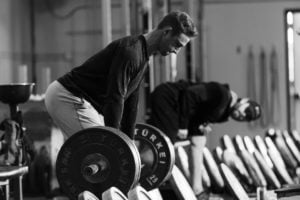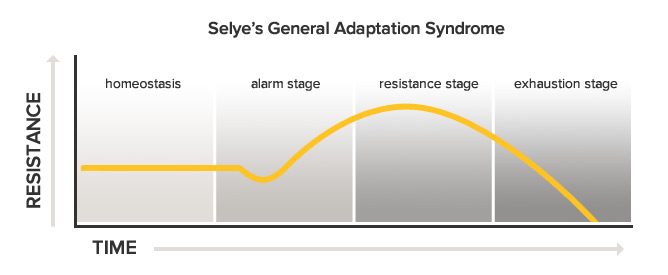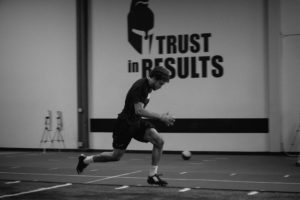
The strength and conditioning industry seems to be at a crossroads. There is the old school camp who value coaching, accountability, and culture; and the new school camp who emphasize objective data, scientific evidence, and technology. If social media were to be used as a measuring stick, it would seem these old school coaches are a dying breed. In reality, most of them are just too busy coaching. They may not be ‘tech savvy’ enough to get online to defend themselves, or (more likely) don’t actually care what you think. With emphasis today on collecting data and being actionable and objective, we are losing sight of some of the key principles of those that built an entire industry: teaching, trust, culture, and accountability. It is an important question to ask, as our industry leaps into the future, are we truly any better off than we were 10 years ago?
Strength and conditioning coaches largely began simply as the ‘weights coach.’ We observed that bigger, stronger, faster athletes often excelled against their smaller, weaker, slower counterparts. With Hans Selye’s General Adaptation Syndrome as a guide, these coaches looked to improve the physical abilities of athletes as a whole. The industry itself has grown to include physical training for tactical (military, fire, police) and general populations as well. These concepts have been validated time and time again by researchers and scientists. Cause stress, adapt to stress, become more resilient to stress… pretty simple.

Without certifications or webinars to teach these coaches, experience became the ultimate guide. ‘Old school’ coaches became experts in performing movements and in turn teaching and coaching these movements. Exercise techniques were mastered first by doing in order to become proficient enough to demonstrate and teach. While the goal was to create more and more stress, these coaches understood that movements needed to be done well in order for the specific adaptations we were chasing to be realized (the SAID principle). These coaches became phenomenal teachers, as they understood training done without an emphasis on quality wouldn’t be nearly as effective. They quickly learned that what you were doing in training matters much less than how it was actually done. Just like creating a lesson plan doesn’t make you a teacher, writing a program doesn’t make you a coach.
With the what (training), why (improve performance and resilience), and how (technique) understood, one final challenge had to be met: compliance. Challenges with compliance are hardly unique to this industry. In the field of medicine for example, extended release technology was created largely because the compliance of taking a medication multiple times a day was abysmal compared to once a day. That is, it didn’t make the medication any more effective, but simply helped control for human nature. In the field of strength and conditioning, compliance often boils down to one thing: trust.
Especially with a lack of scientific evidence supporting much of what these coaches did, creating trust and building relationships was crucial to being an effective coach. Creating trust takes time, confrontation, transparency, and conflict. Often time individuals have their own ideas on what they should be doing and why that may be conflicting with a coaches philosophy. The ‘because I said so’ coaching method only works for so long. Confrontation and uncomfortable conversations are a constant in most coaches lives.

Coaches are required not only to build trust with athletes, but to build trust and create relationships with decision makers as well. This concept has been validated time and time again as we continue to see sport coaches hiring ‘their guy’ as they climb (or fall from) the coaching ladder. Largely thanks to collegiate football and NCAA rules, the strength coach has been thrust into the role of the culture coach. With large chunks of time away from the sport coaching staff, it has fallen on us to hold these athletes accountable and enforce the rules and culture as set by the coach or institution. Whether we agree with this concept or not, the truth is many strength coaches are still primarily evaluated by their ability to uphold the standards and breed the culture expected by the organization.
The biases of the ‘old school coach’ are often thought of as negative, however there are many biases that go along with the ‘new school’ as well. With an emphasis on science and research, many young coaches are wizards in Excel and data analysis. They can create a pivot table, but can they teach a squat? They can analyze GPS data, but will they confront a noncompliant athlete? They understand the difference between the sympathetic and parasympathetic nervous systems, but can they sell themselves, or the culture of their organization? Coaches who have built careers without utilizing these data, or technology are often skeptical of those who rely on them so heavily.
Researchers and scientists will continue to collect more and more data to continue to validate and improve what we know about the what, the why, and the how. Technology can and should help practitioners to collect data and practically apply these findings to their specific situations. But without the emotional intelligence to make changes based on these findings, is there any true value?
In reality most coaches aren’t strictly ‘old school’ or ‘new school’, but fall somewhere on a spectrum. The terms old or new school themselves are a bit archaic, but are simply used to prove a point. This was not intended to be a slight to a younger generation of coaches, but praise to those who built an entire industry from the ground up. Negativity will only continue to widen the gap. There is value in collecting and analyzing objective data to decipher best practices, but this alone will not be enough to truly help our athletes. Just as it is important for strength coaches and sports medicine to align, the strength and conditioning industry itself must align in order to improve the industry as a whole. Relationships, trust, and coaching all matter. While younger coaches may have in-depth knowledge of the latest scientific evidence and research, experience cannot be achieved from simply reading an article. There is far more to learn from an experienced coach than there is from any textbook or research paper.